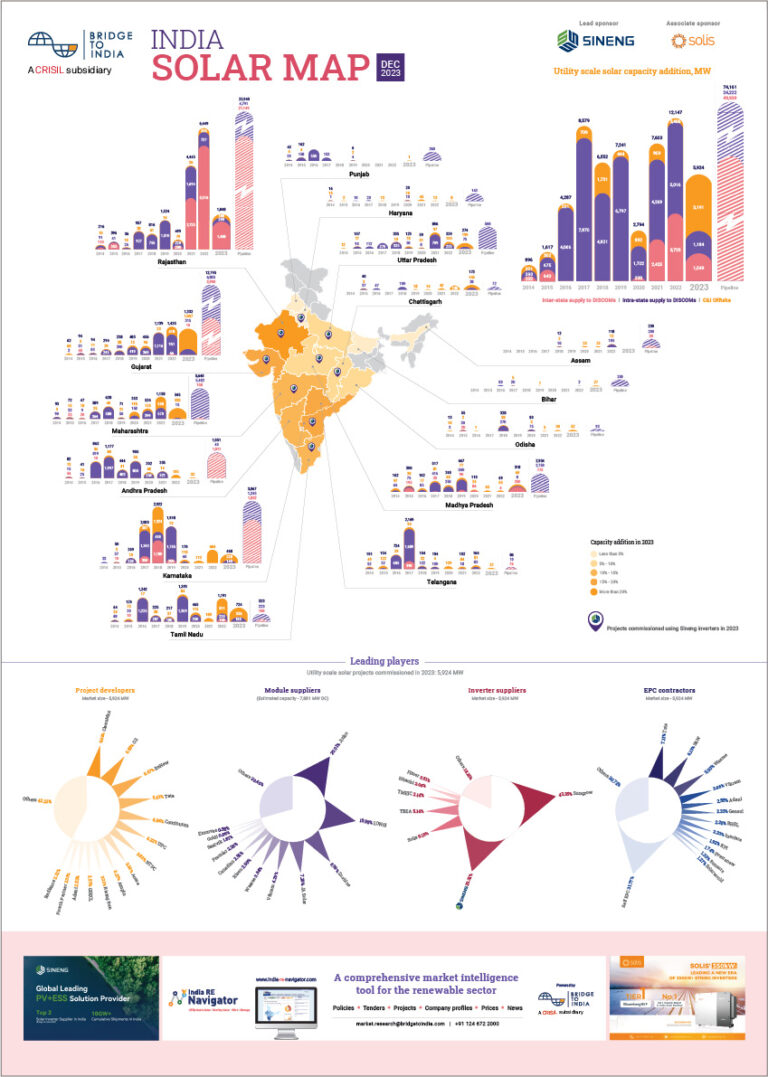The poor financial health of India’s power distribution companies (DISCOMs) is deemed to be the weakest link in the Indian power sector and a huge headache for project developers. It is not just critical for the revival of the power sector but also for the health of public sector banks. Recent estimates by CRISIL suggest that poor progress on tariff reforms and high AT&C losses have cost led to accumulated DISCOM losses of INR 3.75 trillion (USD 56 billion). To put this in perspective: this is equivalent to around 2.7% of India’s GDP.
- Central government wants states to issue bonds for raising funds at 8.5-9% to refinance power firms’ current high-cost loans (13-14%)
- In return for reforms, central government will offer funds from schemes such as the Integrated Power Development System and Deen Dayal Upadhyaya Gram Jyoti Yojana
- The long term growth prospects of the solar sector are contingent upon the financial health of the DISCOMs
In a positive and much needed development, India’s power minister Piyush Goyal recently clarified that the central government cannot be a bailout bank for debt-ridden DISCOMs and that states will have to find their own way out of the crisis (refer). Instead, the central government sees its role as limited to nudging state governments into reforms using a carrot and stick approach. In line with that, the central government is proposing that state governments push through urgent reforms to improve the financial situation of the DISCOMs. Some of the reforms proposed are: i) states should issue bonds for raising funds at 8.5-9% to refinance high-cost loans (13-14%) of DISCOMs; ii) cut the aggregate technical and commercial losses to 15% (currently the average is above 25%; in some states like Jharkhand (42%) and Uttar Pradesh (32%) it is even higher), and; iii) ensure 100% metering and keep the heavily subsidised farm sector on a separate grid.
The carrot offered in return for reforms is funds from schemes such as the Integrated Power Development System and Deen Dayal Upadhyaya Gram Jyoti Yojana. These funds could be linked to the performance of states on reforms.
The root cause for past failures to stabilise DISCOM finances lies in heavy and often short-sighted political interference, leading to – amongst other things – unsustainably low power tariffs. In turn, DISCOMs have always banked on the state and central governments to bail them out at regular intervals. With the central government now refusing to give ad hoc funding to DISCOMs, the pressure to reform is rising.
In face of a looming power sector crisis in the country, there is an urgent need to raise power tariffs and remove inefficiencies. In the short term, solar power might benefit from a power crisis. However, in the long term, the growth of the solar sector is closely linked to the health of the grid, DISCOM finances and the overall economy. As with most other pending reforms, the states seem to be at the steering wheel and not the central government. We hope that economic sense and mature politics will prevail over short term political gains and populism and result in the much awaited power sector reforms.
Other announcements
Last week, the Solar Energy Corporation of India (SECI) announced a Viability Gap Funding (VGF) based allocation of 500 MW in Maharashtra and 250 MW in Gujarat (refer). Also, NTPC announced a new EPC tender for 750 MW in Andhra Pradesh (refer).












